2012: Our Founding
In the fall of 2012, two dozen Episcopalians met in a living room in Conway, South Carolina, determined that the Episcopal Church would not disappear from this region, a casualty of controversy, politics, and schism. Stories of church divisions sometimes end unhappily. A few loud disagreements among Christians can undo—in the eyes of the skeptical world—a thousand quiet good works and years of Christian witness.
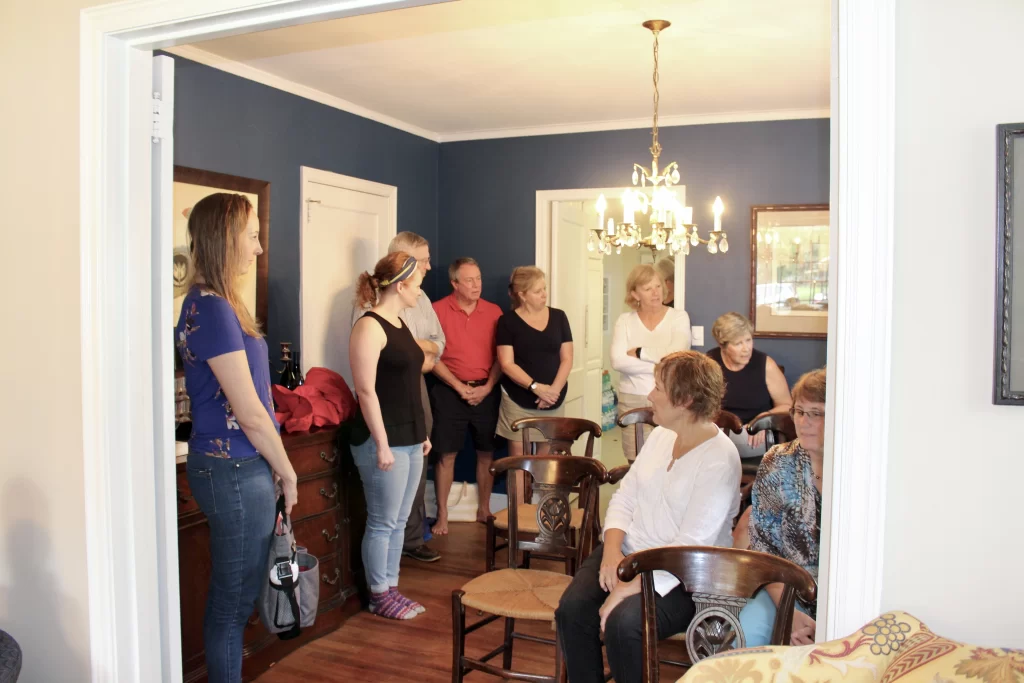

But something wonderful happened. In a borrowed worship space, with an improvised altar, a loaner communion kit, and a few prayer books, we were reminded how simple the church is supposed to be.
No longer able to rely on a professional staff, volunteers took up the work. Without any permanent clergy, the lay people ministered to each other. With no social hall, we stood in the grass, gathered in kitchens, or pulled extra chairs onto back porches. It was all hands on deck in a community that was called “Conway Worship Group” (and “St. Nobody’s” when we indulged in self-pity).
But we were not without resources. We were able to rent Lackey Chapel at Coastal Carolina University, a beautiful, simple space built for the use of all faiths, but somehow equipped with Episcopalian-friendly kneelers. Individual parishioners felt a sense of ownership in the new enterprise, and there was (and still is) an organic feeling to our Sundays. Collection baskets were, literally, baskets taken from somebody’s closet shelf. Yet without the hint of a stewardship campaign, those baskets were filled. For our first baptism, a large porcelain bowl served as a font. The christening pitcher had spent most of its useful life as a means to serve sweet tea, but it did the job that Sunday. A tin cross came in from somebody’s yard to turn a table into an altar.
An altar guild sprang up; among our little group, we had just enough lectors, chalice-bearers, acolytes, and ushers. It seemed that half the church could sing, and the other half was willing to croak, bleat, or holler as best they could, so a music ministry bloomed forth, leading to a choir so excellent we are willing to risk the sin of pride to give it its due.
In those early weeks and months, we felt the Episcopal Church like a wind at our backs. Holy Cross Faith Memorial Episcopal Church in Pawleys Island shared its expertise and extended a steadying hand. St. Stephen’s in Heathsville, Virginia, and the Episcopal Diocese of Fort Worth sent liturgical items. The Bible and Common Prayer Book Society of the Episcopal Church sent copies of The Book of Common Prayer. Priests from hundreds of miles around came to Conway to lead services. We shrugged off the irony that a local church split bound us to national brothers and sisters we’d never met.
Eventually, we found a name. A parishioner with a long memory recalled that at Coastal Carolina University there had been an Episcopal ministry called “St. Anne’s Chapel” in the 1980s. The college group faded away decades ago, but that slim thread of heritage was enough of a sign, as was the story of St. Anne herself; tradition says that the grandmother of Christ was aged and barren when she cried to the Lord and asked for a child.
2013: Father Barry, Interim Priest-in-Charge
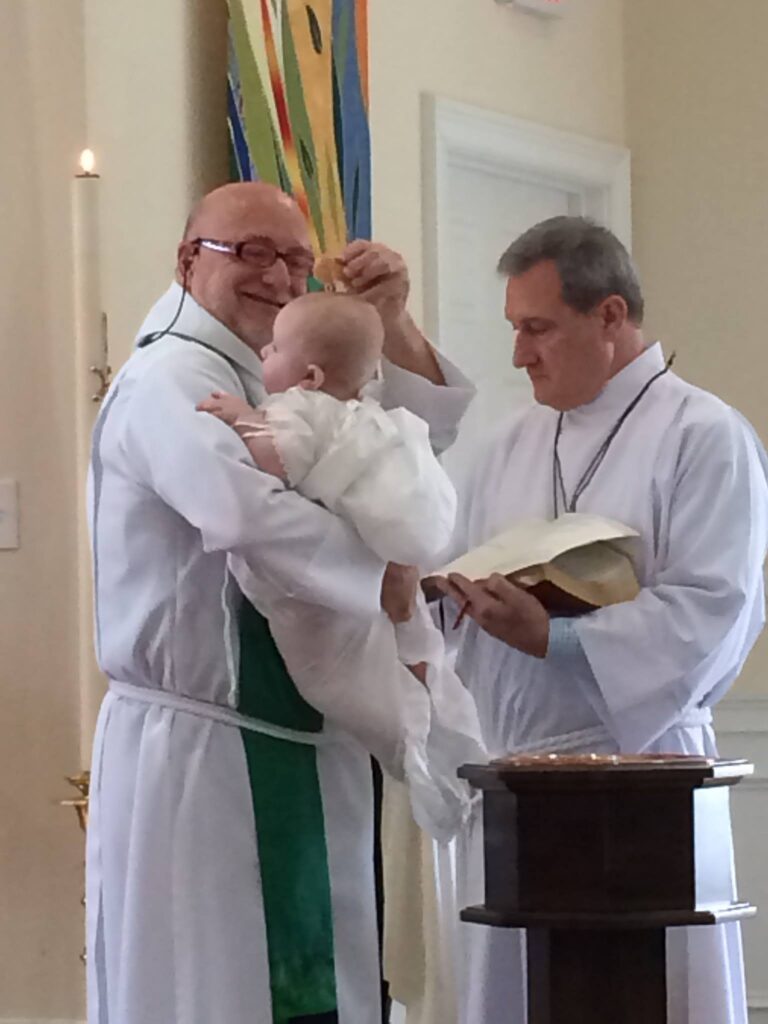
Our first priest-in-charge, Father Barry Stopfel, came to us after recently retiring to the area. He was called out of retirement to serve as the first interim priest, giving the congregation a sense of continuity and purpose.
Father Stopfel led the way for gay clergy to be ordained throughout the 1990s, surviving a heresy trial and ostensibly at the center of the very schism that formed St. Anne’s. His book, A Courage to Love, chronicled his experience. Fr. Stopfel, in many ways, was the perfect first pastor, reminding St. Anne’s, too, to have courage and find a way forward.
His dynamic preaching style challenged us as a congregation, often intertwining present-day headlines with the word of Jesus. He was a reminder for all of us to live boldly and with conviction. On paper, his was a part-time appointment; he gave us his heart full-time.
2016: Father Rob, First Rector
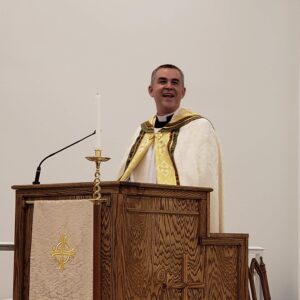
Father Rob joined our congregation in 2016 after our first search for a full-time priest. A graduate of Sewanee Theological Seminary, Father Rob brought an immense amount of energy to our rapidly growing congregation. Under his tenure, he began a children’s sermon with beloved sidekicks Dominic the Donkey and Bartholomew “Barry” the Sheep, translating humor with the Christian message. Father Rob led, often through inspiring others to lead and innovate, as in the case of the Education for Ministry, increased social activities, and collaborations between St. Stephen’s in North Myrtle Beach and First United Methodist Church in Conway. His collaborations established Saint Anne’s as an active and connected part of the surrounding religious community.
Father Rob also served as a mentor to other congregations, within and outside the diocese, to transition to virtual services, and he worked with the Building Committee to ensure that virtual services are a permanent part of the congregation. It was under Father Rob’s tenure that we were ultimately able to finally call a space “home.”
2018: Parish Status
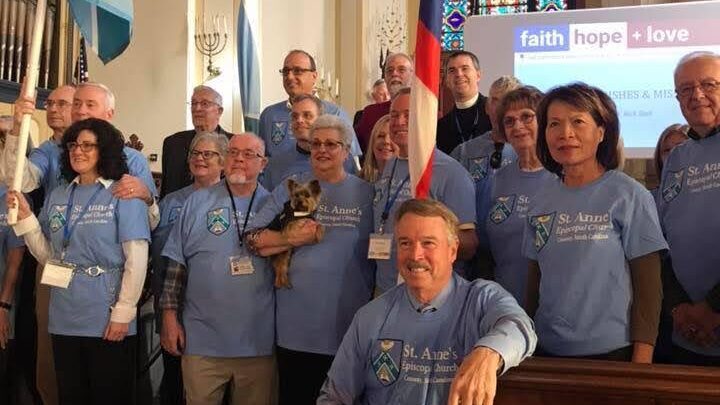
In 2018, we celebrated our transition from a mission church to parish status. Congregants traveled en masse to Grace Cathedral in Charleston to receive and represent our charge of becoming a parish.
2020-2021: A Virtual, then Physical Home
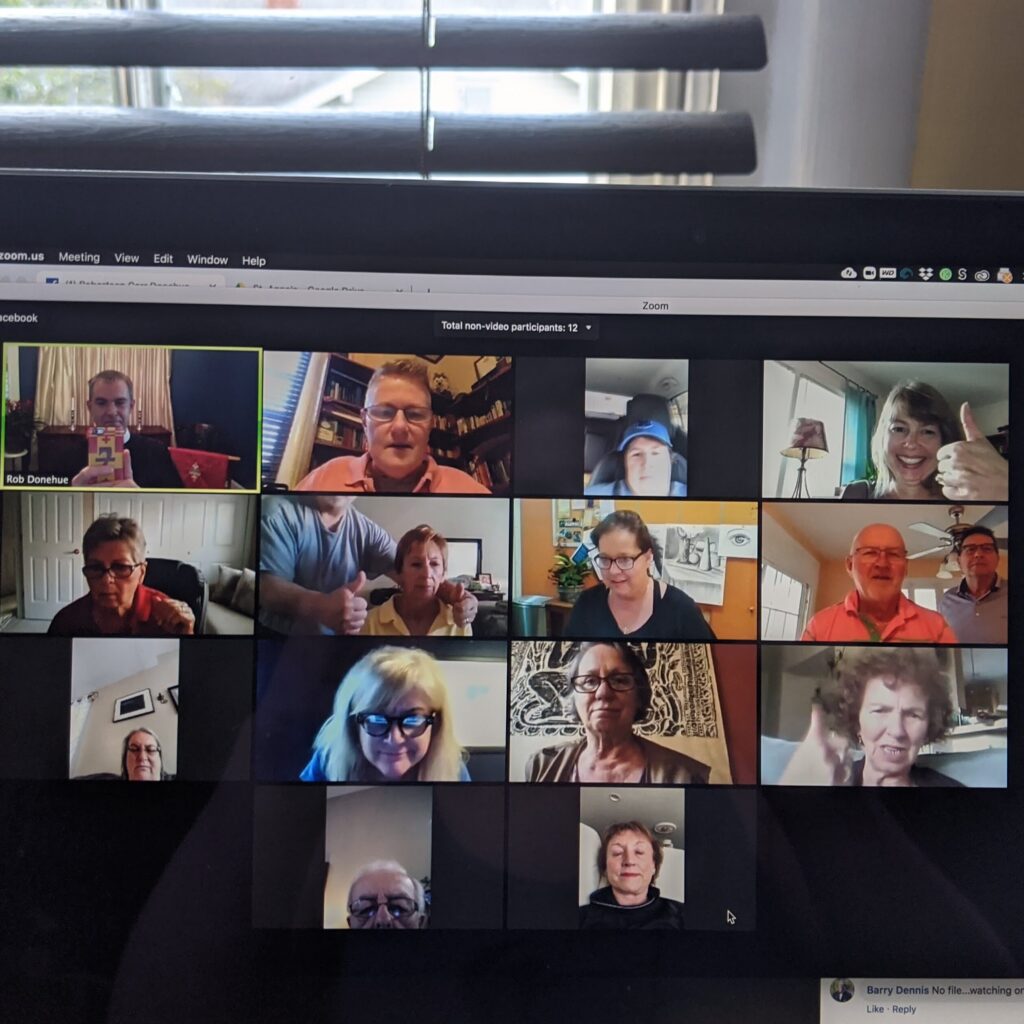
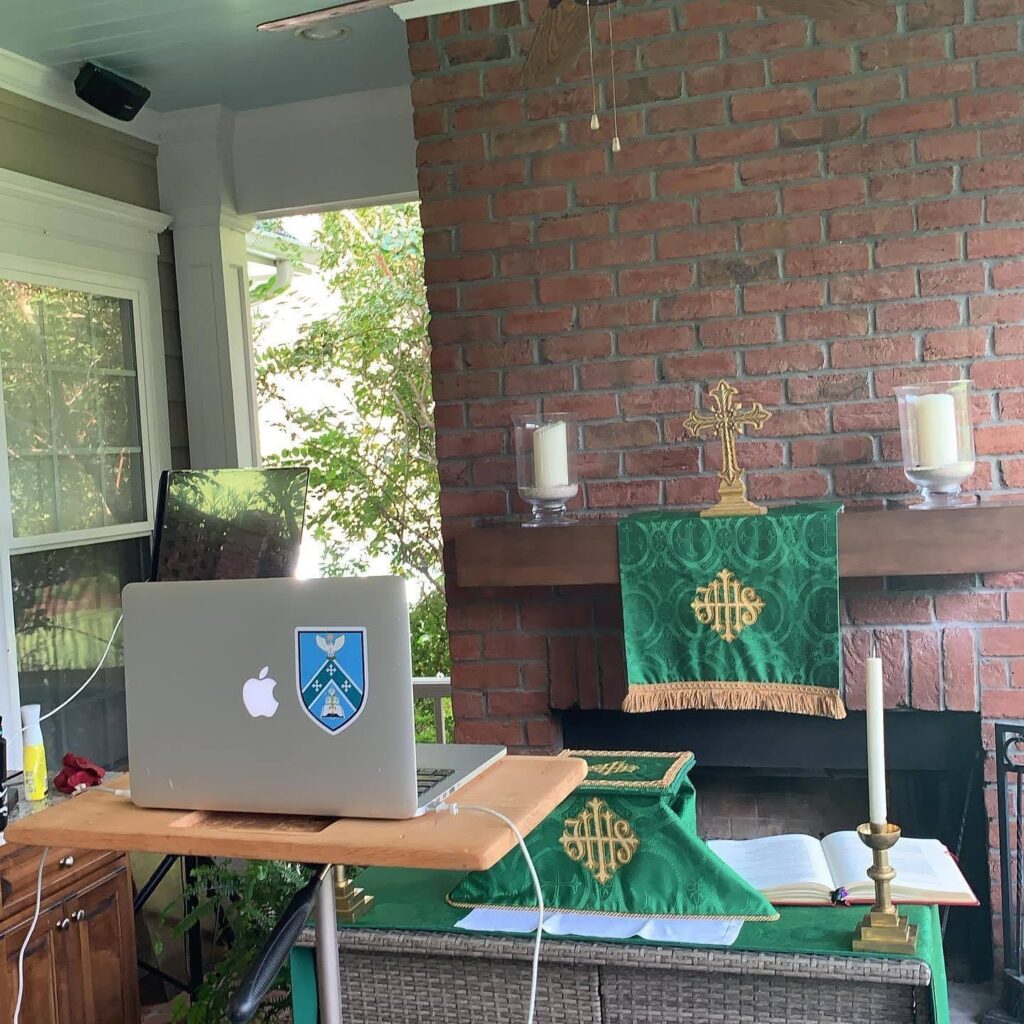
Like many congregations, the COVID pandemic shut down our home at Lackey Chapel, and we looked for a new way to worship. Within the week, our congregation organized to conduct services digitally. We spent hours setting up microphones, controllers, hosts, co-hosts, and moderators. And ten minutes before our first service, our rector’s internet failed. He quickly ran to the closest congregant: Kathleen Hearn and Lane Jefferies, and held service, socially distanced, on their outdoor porch. Over the next year, our congregation bonded over birds chirping during prayer, compiled choral mixes, and comments left on our Facebook stream. In some ways, we rediscovered the early days of Christianity and our church, finding congregation and the spirit in our homes.
Our ministries continued virtually, and even when we felt we would never be able to congregate or sing together again, our vestry and leadership took on this opportunity to find ourselves a permanent home. Formerly the Lighthouse Christian Book Store, Saint Anne’s purchased the building in March 2020 through a capital campaign and with the help of the Episcopal Church Building Fund. The interior of the space has been completely remodeled, and we recently finished touching up the appearance of the exterior with a new coat of paint, a new sign, and a cross that took over the former lighthouse facade.
Despite our ability to congregate, we continue to invest in our online presence, looking and finding ways of allowing us to continue to gather from across the country. We also understand that the journey to a church community is not always straightforward, and we are happy to open ourselves online to those that are interested. And we hope after inviting us into their homes, they will invite our church into their hearts.
Each week new faces appear, many of them blissfully ignorant of our recent church controversies. Just folks looking for a place to pray and sing and ask questions and experience the weekly miracle of the Eucharist. Our two dozen has doubled and re-doubled, but we remain a cheerful, good-humored, earnest group—rather than the “frozen chosen,” we prefer to think of ourselves as the “thawed flawed!”
We are fully aware of the challenges and the politics that come with organized religion, but at St. Anne’s, the most important mission is the work. We get along—not because we’re particularly virtuous (when it comes to feet of clay, ours are thick with the stuff!). No, we get along because that thing your grandmother told you about “idle hands” is true. Recreating “church” each week, ministering to each other, finding our work in the world. At St. Anne’s, there are few idle hands.
2022: Rev. Sandra “Sandy” K. Moyle, Interim Rector

Rev. Sandy came to St. Anne’s in May 2022 during our time of need. Transitions are always hard and our spirits were down but not “out.” Rev. Sandy lifted us up and showed us that good things can come from change. Her warmth, irreverence, and colloquial style at the pulpit both resonated with and reflected the congregants of St. Anne’s. She has carefully guided us and reminded us of our congregational roots, and she has facilitated many important conversations.
Moreover, it was a privilege to welcome our first female priest and Bishop Ruth in the same year.
2023: A New Calling and Return to Lay Leadership
Rev. Sandy’s appointment ended with us in May 2023, and we are grateful to host service priests three out of every four Sundays. Our fourth Sunday is an opportunity for us to again remember our roots in a lay-led service, as well as utilize the talents of our congregation. You can see these services from June, July, and August on our Facebook Live feed.
St. Anne’s was again on the front lines of celebrating diversity and inclusivity within our local community by supporting Conway’s proclamation for Pride Month (My Horry News, Post and Courier, and ) close to the anniversary of our protest after the Horry County Council rescinded a similar proclamation. The congregation was blessed to have Mayor Blain-Bellamy join our service and thank her for standing by the proclamation in support of the LGBTQ+ members of our community.
Because of this work, we continue to attract new members to our mission of radical love. Our congregation is eager for a new rector to be a new collaborator on our capital campaign, community work, and pastoral care.
